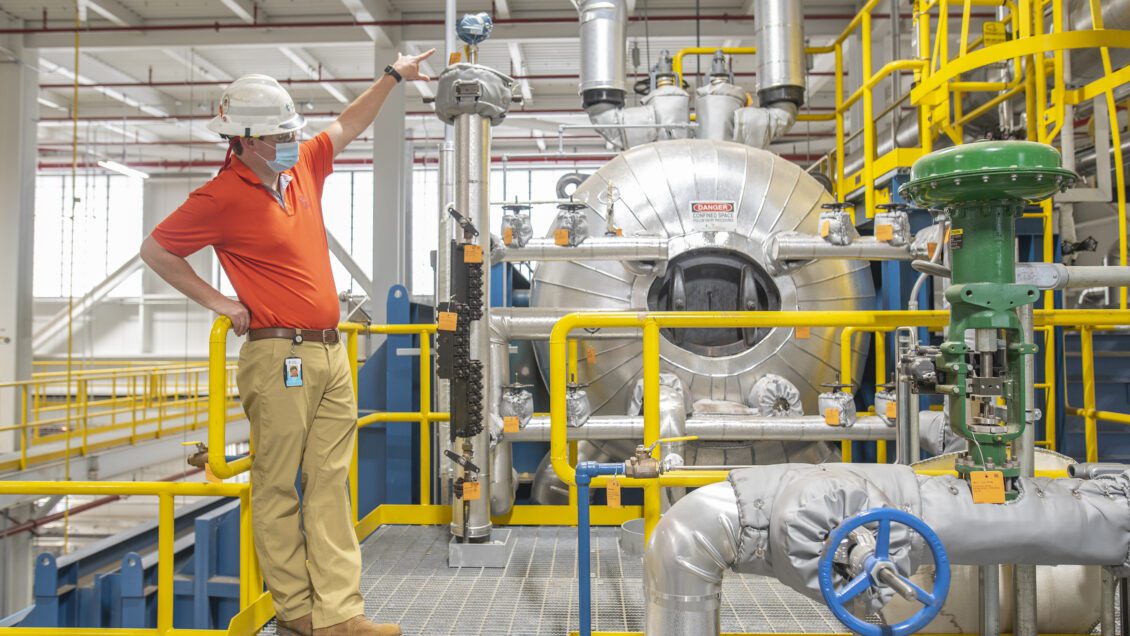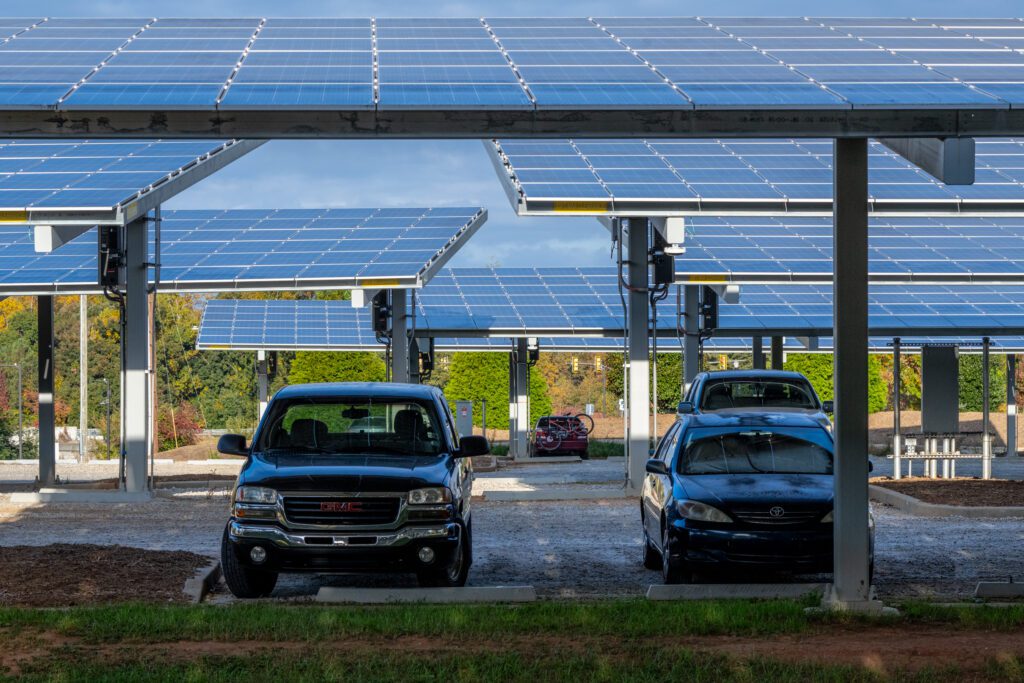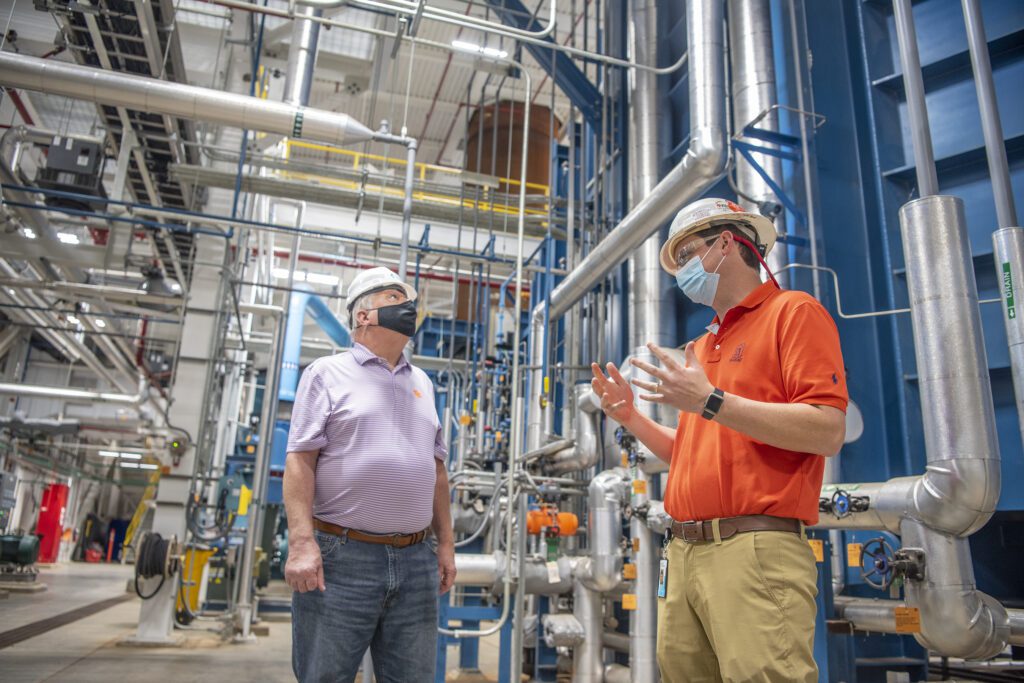
In 2007, Clemson University became one of the charter signatories of the American College and University President’s Climate Commitment, a coalition of institutions of higher learning that believed “firmly in the power, potential, and imperative of higher education’s key role in shaping a sustainable society.”
By signing the commitment, Clemson agreed to “act on bold climate commitments, to scale campus climate initiatives, and to create innovative climate solutions.”
Two years later, President James Barker established the Clemson University Sustainability Commission to organize and drive the University’s sustainability practices. Composed of approximately 32 faculty, staff and students from all corners of the University, the commission is the coordinating body for the University’s push to become a model of sustainability among institutions.
As a land grant school, sustainability is nothing new for Clemson because agriculture and caring for the land go hand-in-hand. The ultimate goal of the CUSC is to make the University carbon-neutral by 2030. This ambitious goal will require multiple large-scale projects and can be accomplished through initiatives in six major areas:
- Carbon-free energy sources
- Energy system efficiency
- Green Tiger One
- Conservation/resource management/waste elimination
- Transportation energy efficiency
- Carbon offsets

Within these areas, carbon neutrality will require a series of more than 20 major initiatives, each with multiple sub-activities. These include changes to infrastructure, building systems, commute behavior, forest management and many others.
“We set an aggressive goal for carbon neutrality over a decade ago,” said Jennifer Goree, director of Student Health Services. “We decided then and are still committed today to creating efficiencies, driving innovation, and providing exceptional educational and research opportunities that will lead to measurable progress toward our goal.”
The plan calls for the University to eliminate or offset almost 190,000 tons of yearly carbon emissions in one generation while allowing for growth and change in the institution.
To date, the University has made considerable progress toward that ambitious goal:
In 2000, the University began replacing coal with natural gas and eliminated burning coal for campus heating in 2011, which previously accounted for 6% of its energy use. The construction of a new high-efficiency natural gas combined heat and power (CHP) facility with Duke Energy further cut emissions on campus significantly and enhanced campus infrastructure resiliency.

In addition, the University achieved a 20% reduction in energy intensity by 2020, and a 10% increase in renewable energy sourcing will be in effect by 2025.
Clemson adopted a Sustainable Building Policy in 2004 and a Sustainable Energy Policy in 2008, had the first Leadership in Energy and Environmental Design (LEED)-certified public building in South Carolina and has since completed 22 LEED-certified projects.
“Achieving Clemson’s commitment to cost efficiency and environmental sustainability involves implementing a diverse portfolio of high energy efficiency improvements in our existing facilities,” said Tony Putnum, director of Utility Services. “It also involves balancing cost-effective campus infrastructure solutions and reliable sustainable energy sources to safely advance the operations of the university and student learning experiences.”
To creatively address sustainability, the CUSC facilitates collaboration among students, faculty, staff and the community by integrating education, research and public service with the social, economic and environmental infrastructure.
Clemson’s sustainability website states, “True sustainability is proactive, urging us to do “more good instead of just less bad.” Our understanding of sustainability is apparent in how we run our facilities, teach our students, conduct research and interact with our community.”
Part of Clemson’s mission is to motivate “students to think deeply about and engage in the social, scientific, economic and professional challenges of our times.” Problems stemming from the climate crisis are among the most relevant of these topics.

Along the path to a net-zero Clemson are two major checkpoints regarding building intensity and clean energy sourcing. The University met its goal to reduce overall building energy intensity by 20 percent from 2000 to 2020 and has pledged to increase energy sourcing from renewable resources by 10 percent by 2025.
To ensure accountability and unbiased assessment of our sustainable progress, Clemson has committed to participate in the Sustainability Tracking, Assessment, and Rating System (STARS) carried out by the Association for the Advancement of Sustainability in Higher Education (AASHE) every three years moving forward. In 2019, Clemson received a prestigious Silver rating from STARS. The CUSC is currently beginning the process of the latest STARS report, which involves collecting data, holding interviews, finding key participants, and increasing the score. Anyone interested in participating is invited to do so at this link.
“It is critical that we all invest in the effort to become a sustainable campus, and the CUSC invites collaboration from all campus stakeholders,” said Goree. “We have an opportunity to demonstrate true leadership for our campus, state and beyond in what many consider to be the greatest global challenge.”
